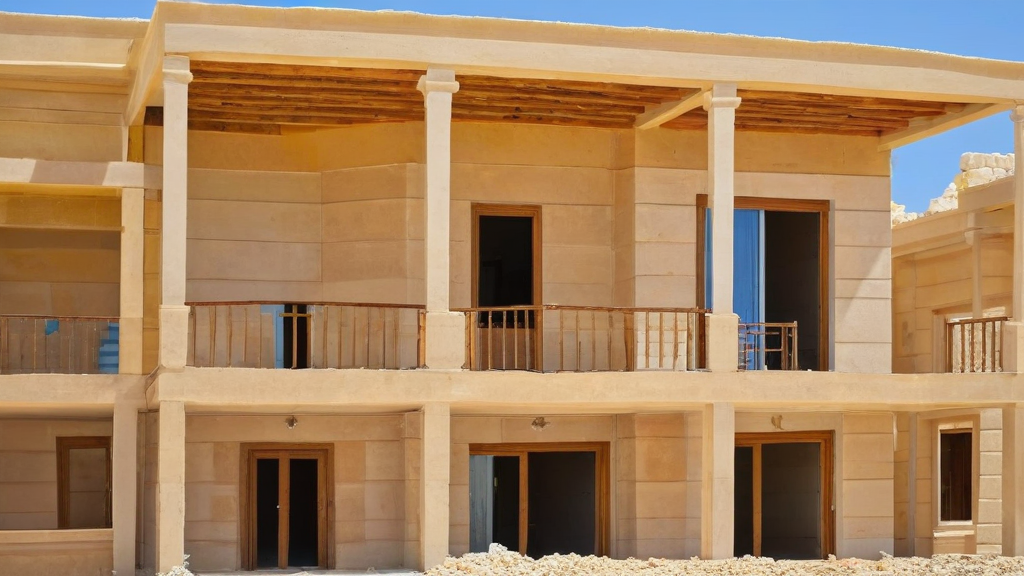Summary about owning and buying property in Hurghada, Egypt.
- When investing in real estate, the location of a property stands out as the single most influential factor affecting your return on investment.
- A well-chosen location can mean high rental income, strong property appreciation, and steady demand, while a poor location might lead to vacancies, low returns, or even capital loss.
- When considering a potential investment, researching local crime statistics and community initiatives aimed at improving safety can be a great way to predict future returns.
- Easy access to major highways, airports, and public transit networks plays an important role in determining a property’s desirability.
- A young, growing population could mean strong rental demand for affordable housing, while an area suited to retirees might favor homes adapted to elderly residents.
How location impacts property investment returns: key factors to consider
The crucial role of location in property investment
When investing in real estate, the location of a property stands out as the single most influential factor affecting your return on investment. A well-chosen location can mean high rental income, strong property appreciation, and steady demand, while a poor location might lead to vacancies, low returns, or even capital loss. Understanding how location shapes the financial performance of property investments equips you to make smarter decisions and secure better outcomes.
How proximity to amenities influences returns
Properties near essential amenities tend to attract more tenants and buyers. Being close to schools, grocery stores, hospitals, parks, and public transport greatly enhances a property’s appeal. This means tenants are likely willing to pay a premium for the convenience, increasing your rental yield. Furthermore, such locations typically experience faster property value appreciation.
For example, a rental property situated within walking distance of a major university will generally enjoy high demand all year round. This steady demand reduces vacancy rates and provides consistent cash flow, essential factors for a profitable investment.
Neighborhood safety and its impact on property value
Safety is a top priority for renters and buyers alike. Properties in low-crime neighborhoods command higher prices and stronger rental incomes. When considering a potential investment, researching local crime statistics and community initiatives aimed at improving safety can be a great way to predict future returns.
Areas undergoing revitalization programs often become safe and vibrant, driving property values upward. Investing early in such neighborhoods can yield significant capital gains once improvements take effect.
Economic growth and employment opportunities
Location within a thriving economy usually translates into strong investment returns. Cities or regions with growing job markets attract more residents seeking housing, pushing up demand for rental and owned properties. This demand puts upward pressure on both rental prices and property values.
Look for areas where new businesses are opening, infrastructure projects are underway, or government incentives encourage development. For instance, a suburb near a new tech park or manufacturing hub often experiences rapid growth, which can boost your property’s worth over time.
Transport links and connectivity
Easy access to major highways, airports, and public transit networks plays an important role in determining a property’s desirability. Good connectivity reduces commute times and enhances lifestyle convenience, factors that tenants highly value. This translates into a larger pool of potential tenants or buyers willing to pay more for such benefits.
If the location lies along or near upcoming transit lines, even better , future infrastructure can significantly increase property values as demand surges.
Demographic trends and population growth
Understanding population trends within a location can help predict long-term investment viability. Areas with growing populations often see falling vacancy rates and rising rental prices. Conversely, declining populations might signal shrinking demand and potential decreases in property values.
Keep an eye on local birth rates, migration patterns, and age demographics. A young, growing population could mean strong rental demand for affordable housing, while an area suited to retirees might favor homes adapted to elderly residents. Aligning your investment type with these trends boosts your chances of steady returns.
Property taxes and local regulations
Taxes and regulations differ widely between locations and can significantly impact your bottom line. High property taxes or restrictive zoning laws may reduce profitability or limit future development opportunities. On the other hand, investor-friendly policies such as tax abatements or less stringent rent controls can increase your net returns.
Understanding local government policies ensures you avoid unexpected costs and take advantage of incentives aimed at encouraging property investment.
Market saturation and competition
The level of competition within a location influences rental pricing and vacancy rates. A saturated market with many available rental units or homes for sale can push prices down, eroding investor returns. In contrast, locations with limited supply relative to demand tend to support higher rents and faster price appreciation.
Evaluating market supply and demand dynamics helps you select the right location where your investment property stands out rather than struggles.
Summary of key location factors affecting property returns
- Access to amenities: Schools, shops, healthcare, parks, and transport.
- Safety: Crime rates and community initiatives.
- Economic conditions: Employment opportunities and growth industries.
- Connectivity: Proximity to transit lines and major roads.
- Population trends: Growth or decline in residents, age groups.
- Taxes and regulations: Local taxation and zoning impacts.
- Market competition: Supply and demand balance.
By carefully evaluating these aspects tied to location, you position yourself to optimize property investment returns. Location isn’t just about the neighborhood or postal code; it’s about the ecosystem surrounding the property and how it supports ongoing demand and appreciation. Keep these factors in mind to choose locations where your real estate investment can thrive for years to come.
Comparing urban vs. suburban property markets: which location offers better investment potential?
Urban versus suburban property markets: key differences in investment returns
When considering property investment, the choice between urban and suburban locations plays a crucial role in determining returns. Each market offers unique advantages and potential challenges, so understanding how location influences property investment performance is essential for making informed decisions.
The appeal of urban property markets
Urban properties are typically situated in city centers or highly developed areas. These locations are often marked by dense populations, diverse amenities, and vibrant economic activity. Several factors contribute to the investment potential in urban property markets:
- High Demand and Rental Yields: Cities attract a wide range of renters and buyers including professionals, students, and tourists, increasing demand for housing. This demand translates to higher rental yields, especially for smaller units and apartments.
- Proximity to Employment and Services: Being close to offices, shops, schools, and entertainment hubs makes urban properties highly desirable, which helps maintain strong capital appreciation over time.
- Public Transportation Access: Urban areas usually benefit from extensive public transport networks, reducing the reliance on personal vehicles and increasing property desirability for commuters.
- Diverse Buyer Pool: The cosmopolitan nature of cities draws a heterogeneous group of buyers and renters, contributing to more stable demand across different market cycles.
However, the urban market also brings challenges such as higher purchase prices, competition among investors, and often more regulatory or infrastructure-related hurdles. The up-front investment may be substantial, but the potential for steady cash flow and long-term growth often justifies these costs.
What suburban property markets offer investors
Suburban properties are located outside major city centers in more spacious and quieter neighborhoods. These areas appeal to families and those seeking more affordable housing options. The suburban market’s investment potential is shaped by different factors:
- Affordability and Property Size: Suburban homes tend to offer larger spaces and yards at lower price points. This affordability attracts a broad segment of buyers and tenants looking for value and comfort.
- Growth from Urban Expansion: Many suburban areas experience growth due to urban sprawl, infrastructure development, and increasing demand for commuter-friendly homes. This can lead to strong capital gains over time.
- Community and Lifestyle Factors: Suburbs often feature family-friendly amenities such as good schools, parks, and safety, which can boost long-term rental and resale values.
- Less Volatile Market Movements: Compared to fast-paced urban markets, suburban property prices often move at a steadier pace, appealing to investors with a preference for stability.
Despite these benefits, suburban properties may face slower rental turnover and could be more sensitive to changes in transportation infrastructure or local economic shifts. The potential for rental yield might be lower than in cities, but the growth prospects tied to development projects and demographic trends remain promising.
Factors that influence investment returns based on location
Understanding how location impacts returns requires looking beyond just urban or suburban labels. Several critical elements directly affect property investment outcomes:
- Economic Growth: Areas with robust job markets, expanding industries, and strong income levels tend to support higher property values and rental demand.
- Population Trends: Growing populations generally lead to increased housing demand. Urban centers often attract younger populations, while suburbs might appeal to growing families.
- Infrastructure and Accessibility: Investments in transport, schools, healthcare, and recreational facilities enhance neighborhood appeal and boost property values.
- Supply Constraints: Limited housing supply, common in many urban areas, can drive price appreciation but also impacts affordability and rental availability.
Making the best choice for your investment
Choosing between urban and suburban property markets depends on your investment goals and risk appetite. If you prioritize vibrant rental yields, shorter vacancy periods, and diverse tenant pools, urban properties may suit you better. On the other hand, if your strategy focuses on long-term capital gains, affordability, and family-oriented tenants, suburban markets could offer a more suitable avenue.
Remember, location is just one part of successful property investment. Thorough due diligence, understanding local market trends, and evaluating individual property attributes are equally important. You should also consider leveraging tools like market reports and consultation with local real estate experts to refine your investment strategy.
Ultimately, balancing these factors will help you maximize returns and reduce risks linked to property investment based on where you choose to invest,be it the bustling heart of a city or the expanding comfort of a suburb.
Choosing the right location is one of the most important decisions you’ll make as a property investor. The factors you consider,such as neighborhood growth, accessibility, amenities, and economic stability,directly influence the returns you can expect. Urban properties often attract higher demand due to job opportunities, entertainment options, and public transport, which can lead to strong rental yields and quicker property appreciation. However, they might come with higher purchase prices and tougher competition. On the other hand, suburban markets can offer more affordable entry points, larger spaces, and potential for growth as these areas develop and attract families looking for quieter lifestyles.
Understanding these nuances helps you weigh where your investment dollars will work best. Urban areas often provide faster returns with ongoing demand, while suburban locations might offer longer-term growth and value appreciation. Ultimately, your choice depends on your investment goals, risk tolerance, and the specific characteristics of the local property market. By focusing on location and its unique factors, you improve your chances of securing consistent rental income and capital gains.
Remember, a well-chosen location can lessen risks and boost your overall property investment performance. Take the time to research, visit potential areas, and analyze market trends before making your decision. With a clear grasp of how location affects property investment returns, you position yourself to make smarter, more profitable choices that align with your financial goals.










